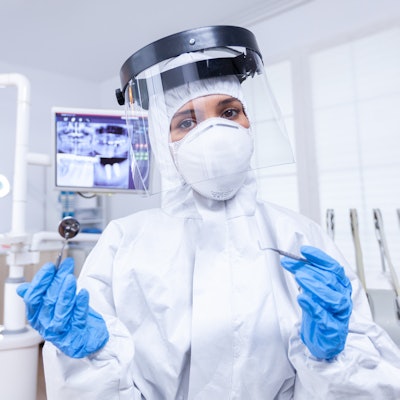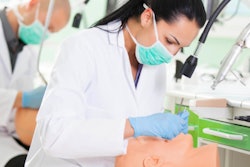
At the end of 2019 as COVID-19 spread globally, the World Health Organization (WHO) released infection prevention and control (IPC) protocols to reduce the rate of infection. A study published on July 18 in the International Dental Journal details how dental schools rapidly adjusted to ensure the safety of students, staff, and patients.
At the beginning of the pandemic, little was known about SARS-CoV-2, so WHO protocols were not evidence-based when dental schools resumed in-person training and practice early during the pandemic. As the pandemic progressed, more knowledge about the novel coronavirus was gained and IPC protocols were revised, but the changes often resulted in conflicting guidelines and confusion for students at staff.
As part of an ongoing study assessing the COVID-19 experience in all 10 dental schools in Canada, researchers identified specific IPC strategies with substantial concordance and discordance across the schools. The study included all 10 dental schools in Canada, which are located in nine cities and seven provinces.
Varying IPC strategies were placed across the 10 Canadian dental schools. The level of agreement in using the strategies varied by strategy and school. However, much of the discordance was due to participants adopting stronger strategies than those mandated by school protocols.
Of the 600 participants recruited across all schools, about 55% reported that they were involved in providing in-person dental care on campus. With regard to personal protective equipment, the highest levels of agreement across dental schools were in wearing surgical masks and eyeglasses or goggles. The lowest level of agreement involved wearing facial visors. Less than half of the participants wore N95 masks.
With regard to general IPC strategies, the highest level of agreement among participants involved screening patients prior to their appointment. The lowest level of agreement, however, was for disinfecting surfaces frequently touched by patients.
About 97% of participants used a screening process for COVID-19-related symptoms among patients before their appointment. Another 73% reported that staff were screened too. Approximately 93% said that patients were encouraged to wear masks at all times, and about 96% reported daily disinfection of surfaces frequently touched by patients.
In cases where patients tested positive for COVID-19, most schools treated those patients once the symptoms ceased without requiring additional tests.
Of the 16 IPC strategies included in the study, only three were reported to be used at all 10 schools. However, another eight strategies were used by nearly all of the dental schools, suggesting that concordance across schools was optimal for 11 of the 16 strategies.
Perhaps more importantly, the infection control strategies appeared to successfully reduce the risk of SARS-CoV-2 infection during the study's time period. According to the Canadian Institute of Health Information, there was an increase in positive cases among Canadian healthcare workers in 2021, and throughout June 2021, healthcare providers comprised nearly 7% of COVID-19 cases. This increase was lower compared to rates in the general population, suggesting that IPC protocols were beneficial.
"Given the reported differences in IPC protocols and the low COVID-19 infection rates in dental schools in 2021, key strategies that reduce infection versus those that are not efficient should be identified," wrote the study's authors. "Better coordination between the different levels of regulatory bodies will make it easier to comply and follow IPC measures."



















